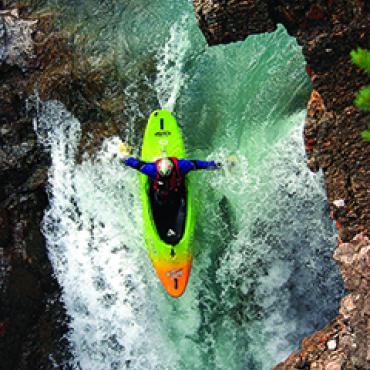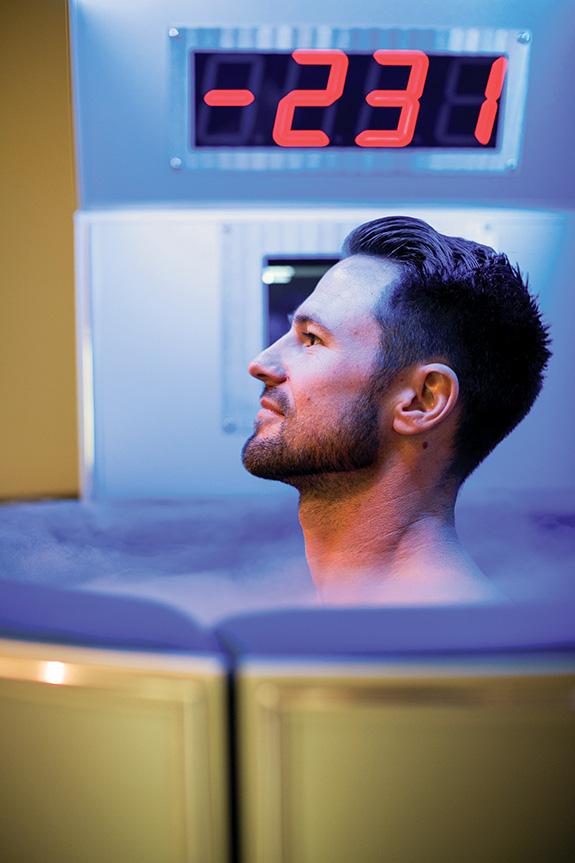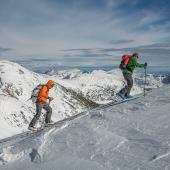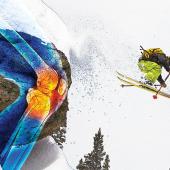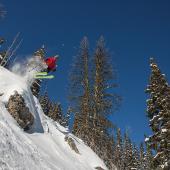Fresh Produce
Alternatives to stagnant training routines.
While preparing for this year’s paddling season, I noticed my strength regressing. The massive snowpack had started trickling down from the mountains and my first race was coming up. For the first time, my normal regimen wasn’t enough—so I decided to try some alternative methods of preparation.
Baptism of Desire
Float therapy was the first addition to my routine. I’d followed the Winter Olympics closely, noting how athletes visualized what they hoped would be medal-winning performances. The course, the wind on their face, the movements… several athletes spoke of how they would thoroughly replay the sequence again and again in their heads. The float tank seemed like a natural fit for this type of preparatory mind work.
Isolation or sensory-deprivation tanks are light- and sound-proof, filled with saltwater heated to skin temperature. I floated effortlessly on the surface and it was nearly impossible to tell where my body ended and the nether began.
After a few minutes, I adjusted to the lack of sensory input and began to imagine the race course, the individual rock features, the shape of the waves, and the ever-present pressure of the other competitors. I noticed my breath quickening whenever I focused on the competitors and strayed from my line, which I was certain was the fastest way through the course. I thought deeply about the rhythm and power of my strokes. Per the Olympians interviewed on this concept, I also imagined the moment of victory and how it would feel floating to the take-out with friends and other competitors.
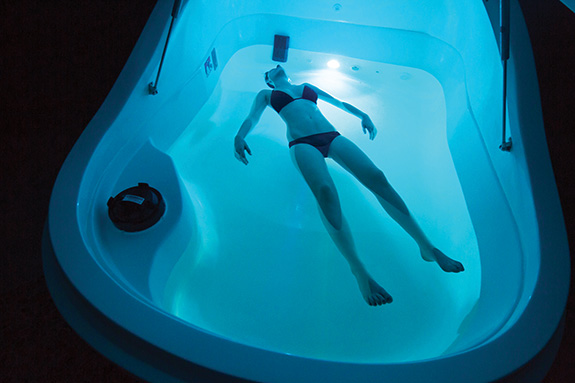
A salty brine: not just for chicken anymore.
After each session, I was relaxed and confident. I also noticed that the sensory input of the outside world—colors, smells, sounds—all seemed especially fresh and vibrant afterward. My mind felt cleansed and back on the river, I focused heavily on my breath and staying calm under pressure. After a few heavy workouts and training days, I initiated part two of my plan: cryotherapy.
Freezer Burn
In a nutshell, cryotherapy uses hyper-cool air to reduce swelling and decrease recovery times while boosting energy. Various temperature options are available. Perpetually prone to masochism, I chose to ramp it up to 11—a la Spinal Tap—right out of the gate. If you can handle a cold-ass day on the ski hill, you should start here, too. It’s certainly tolerable for the acclimated.
It was an odd feeling, standing there just looking around the room while everything beneath the body-enclosure was subjected to temperatures that did not even seem survivable. It was certainly cold, but short-lived, and there was a euphoric quality immediately afterward—similar to the float tank, but shorter. I had a spring in my step and felt vaguely buoyant as I continued on with my day.
My body felt better on the water after each session, though the effects were a little less easy to pinpoint compared to the float-tank revelations regarding breath and stress. I did seem to recover faster after hard training sessions, which makes sense—applying ice to overworked muscles is a time-tested treatment, and cryotherapy is basically a full-body ice-pack.
Testing the Waters
As race day approached, I had left the plateau behind and began to whittle away at my times again. I felt good. I felt ready. When the gun finally popped for the boater-cross, I realized that my starting position was not ideal and that I would need a little help from the alternatives I’d been exploring. I stroked hard for the inside corner on the first bend, and was lucky enough to find a little space after the initial sprint to settle into my line.
It was here that the visualization in particular paid off. I saw what to do without a thought and remembered to breathe smoothly and make the passes cleanly while minding my well-studied position on the river’s flow.
At the finish, it played out eerily similar to the float-tank scheme, although I must admit to feeling terrified once I was out front, as I couldn’t see if I was being chased down from behind. (Just between us, there might have been some huffin’ down the home stretch.)
The verdict? These alternative treatments definitely help me break my rut and achieve my athletic goals. And combining the two therapies, I realized, served as a super-intense, longer-interval version of the hot-cold cycle I’ve often done at the hot springs to reinvigorate my body after a long week at work. In this case, it was an intensified rejuvenation after a long season of training—and a great way to freshen up how I attack my sweaty little hobby.
To try these alternative training tools yourself, check out New Wave Float Therapy off Huffine Lane (behind Sidewinders) and CryoMT off N. 19th (next to Smith’s).

